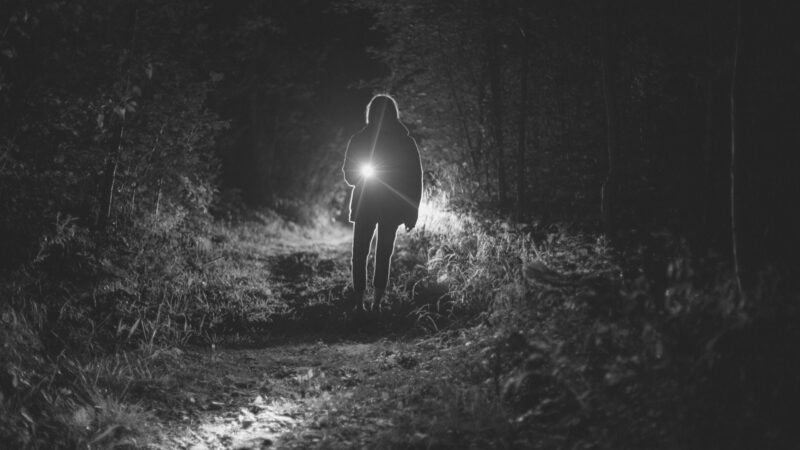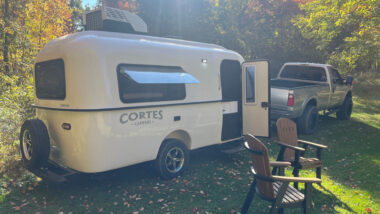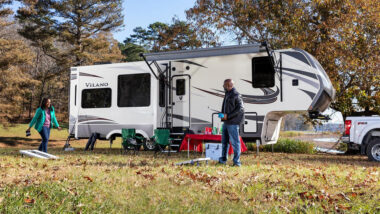Table of Contents Show
Recently, we’ve seen an increase in stories about feral people in national parks. We can thank TikTok and other social media channels for circulating these tales.
Unfortunately, many people become very gullible when they read or see something on the internet. So, it may be time to stop believing that there are feral people in national parks.
Today, we’ll talk about these tales and why so many people believe them to be true.
What Are Feral People?
The term “feral” is often used to reference something or someone considered “wild.” As a result, feral people spend most of their lives isolated from human contact living in the wild.
They possibly lack education and a basic understanding of normal human interactions. These individuals would likely have little to no knowledge of social norms and be extremely disconnected from society.
Just like any wild animal, a feral person would behave unpredictably. They may spook easily and behave erratically, especially if they feel threatened. Anyone encountering a feral person should keep their distance and walk away slowly from the encounter.
Are There Feral People in National Parks?
If you were hoping to search for feral people in any of the national parks, prepare to be disappointed. Despite the viral videos you may see circulating the internet, there’s no evidence of feral people in national parks.
The National Park Service (NPS) frequently issues warnings based on unsafe conditions for weather and animals. It has never issued any warnings for feral people at any of the over 400 national park units.
If you plan to visit any national parks, you can relax. You don’t have to worry about feral people chasing you on a trail or while you explore the park.
The only stories of these mythical creatures come from social media posts on accounts that are likely looking to get their 15 minutes of fame by going viral.
Why Do People Believe Feral People Are in National Parks?
The myths surrounding feral people in national parks have been circulating for some time because strange things happen there. The Examiner estimates that nearly 1,600 adventurers vanish each year when visiting parks throughout the United States. Many of these individuals are highly skilled adventurers who mysteriously vanish.
However, due to the parks’ rough terrain and remote locations, it’s not uncommon for hikers and other outdoor enthusiasts to disappear while exploring these parks. While many of these situations have happy endings, that’s not always the case.
Having no indications of what caused the disappearances, many find it easier to believe feral people played a part in the disappearance than any other possible scenario.
Which National Park Has the Most Missing Persons?
While many people go missing from national parks each year, Grand Canyon National Park tops the list for the most missing persons.
The park had 785 search and rescue missions between 2018 and 2020. The only other national park even remotely close to matching the Grand Canyon is Yosemite National Park, with 732 search and rescue incidents during the same time.
Both of these parks are extremely remote and dangerous. Even experienced hikers can quickly find themselves in a hazardous situation that can become deadly in the blink of an eye.
If you plan to visit any of the national parks, it’s essential that you prepare accordingly. It may just save your life!
Safety Tips for Visiting National Parks
Safety is essential when visiting a county, state, or national park. You can quickly find yourself in a dangerous situation if you don’t value your safety.
Here are several tips you should practice when visiting national parks.
Do Your Research
If you want to make the most of your time and safety in national parks, you need to do your research. The parks typically do a tremendous job of providing information and resources for visitors to help them plan their trips and maximize their safety.
Take the time to read up on any parks you plan to visit and know the areas you should avoid.
Research can also allow you to create a plan regarding any potentially dangerous situations or wildlife you may encounter.
If you’re not “bear aware” while hiking or camping in bear country, you could find unwanted visitors trying to get into your tent, vehicle, or RV during your trip. Always do plenty of research before visiting any of the national parks.

Stay Away From Wildlife
If you encounter wildlife, no matter what kind of wildlife it is, you should keep your distance. You should never approach or attempt to feed any wildlife.
Not only is this dangerous for the animal, but for you as well. Animals fed by humans become dependent on humans for food and can become aggressive during future encounters with humans.
Bison, moose, and bears can look very friendly, and it’s easy to forget that they are wild animals. However, you must keep your distance. Some visitors have received serious fines (over $5,000) and faced jail time because they got too close or fed animals in a national park.
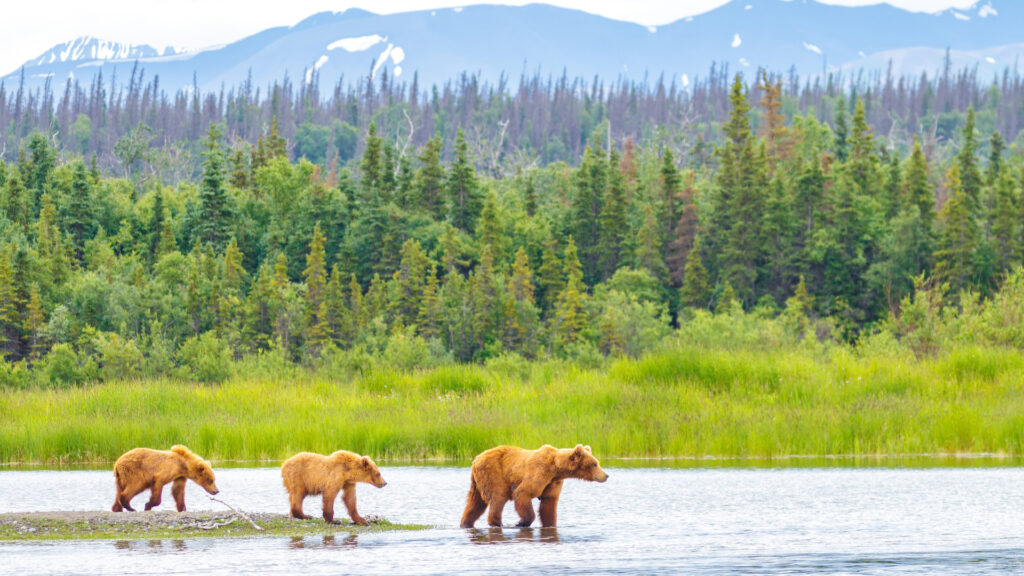
Bring Plenty of Water
Many park visitors underestimate the intensity of heat when visiting these parks. This is especially true for those who want to head out on a hiking adventure.
Some hikes recommend that each hiker carry a gallon or more of water with them during the hike. Those hikers who set out with insufficient water can find themselves struggling physically and mentally to complete a hike.
If you’re not carrying water, you must have a plan for finding water and how you’ll purify it. If not, you could find yourself facing dehydration and hyperthermia. You may even require assistance from park officials to reach safety.
Obey the Rules
National parks have rules for many reasons, primarily to protect visitors and the park from one another.
While you may be the type to question rules or think that you’re an exception to them, neither is a good idea when you’re in a national park. Staying safe means following the rules, even if you disagree with them.
Some of the most important rules to obey include staying on marked trails, keeping your distance from wildlife, and staying out of closed areas.
Park officials will often close sections of a park if there is any concern for guest or wildlife safety. So not only should you know the rules for an area, but you need to follow them. Don’t be afraid to report any guests not obeying the rules to park officials.
Pro Tip: Before you boondocks on national forest land, make sure you know about these 11 Mandatory Rules!
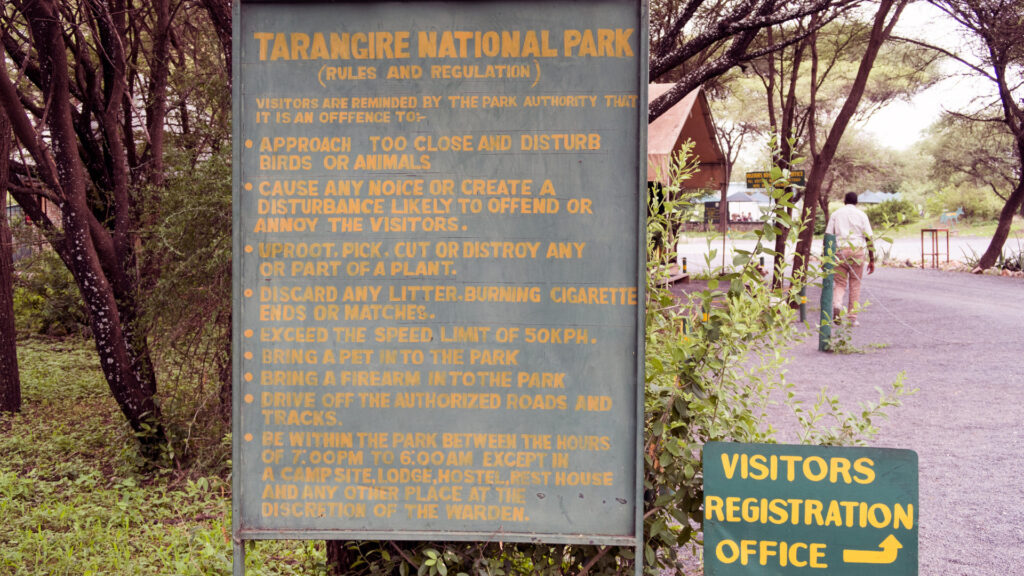
Store Food Correctly
Food storage can be essential to maximize safety depending on which national parks you’re visiting. Some national parks have higher than average populations of bears, which have a sense of smell hundreds of times stronger than humans.
Once a bear smells food, it will do about anything to find it. They’ll open coolers, break into vehicles, and slash their way through a tent.
You must know how to properly store food based on where you’re camping and the wildlife in the area. Animals with encounters with humans and their food can become dangerous for other park guests.
Unfortunately, many animals that become repeat offenders and threaten guests must be relocated or euthanized to keep everyone safe. So make sure you store your food correctly for your safety and the animals.
Keep in Mind: Upgrade your kitchen with these RV kitchen Storage Ideas!
Communicate with Others
Because many national parks are in remote areas, communication can be extremely challenging.
You must find a way to communicate your plans with loved ones and other individuals. Some parks even require guests to check in with rangers by getting a permit before accessing certain areas.
It’s a simple way to communicate your plans with the park so they can keep an eye out for you and help ensure they know where to look if they need to come looking for you.
Many wilderness explorers find it beneficial to create an online calendar to organize their adventures and share them with their loved ones. This helps to ensure that someone knows where you plan to be and when so they know when to rally the troops and come looking for you.
Know Your Limits
It doesn’t matter whether you’re hiking, climbing, kayaking, or enjoying some other outdoor activity. You need to know your limits. Your limits are likely to change based on the weather or conditions in the park.
Some adventures may be possible during normal conditions, but extreme weather or other conditions can likely limit your abilities.
You need to be honest with yourself regarding your capabilities in a situation. Pushing yourself past your physical or mental limits can be extremely dangerous. You are risking your life and the lives of anyone who has to rescue you from the hazardous situation.
While those on search and rescue teams are highly trained individuals, you don’t want to waste their time because you bit off more than you could chew. However, if you do, they’ll likely do all they can to rescue you.
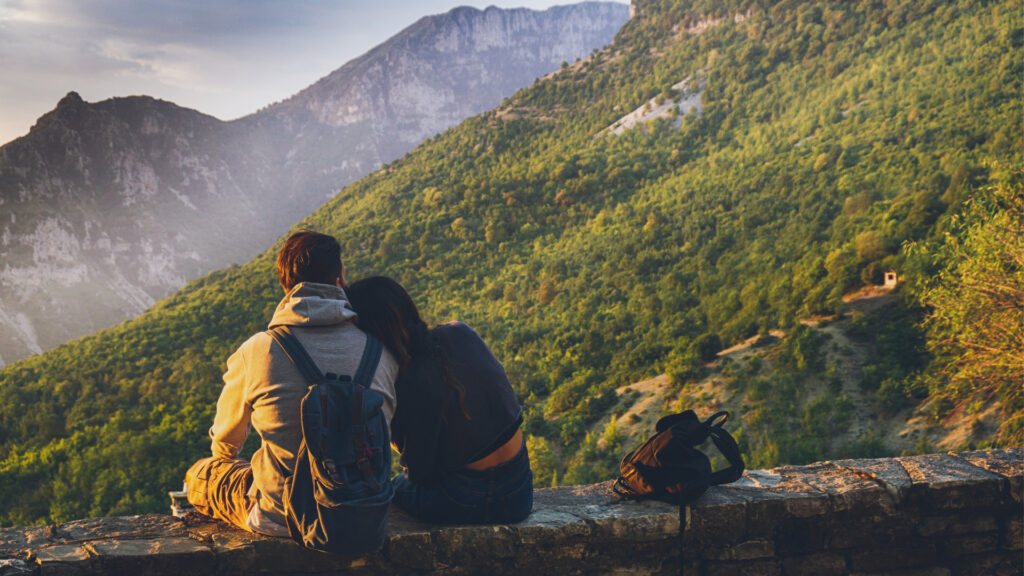
Don’t Believe the Feral People in National Parks Myth
Do bad things happen to people in national parks? Absolutely. However, their disappearances aren’t because of the mythical feral people living in national parks.
Don’t let these stories prevent you from visiting some of the most incredible and inspiring parks in the U.S.
They’re nothing more than folklore, and you can keep yourself safe by following the tips we shared with you today.




